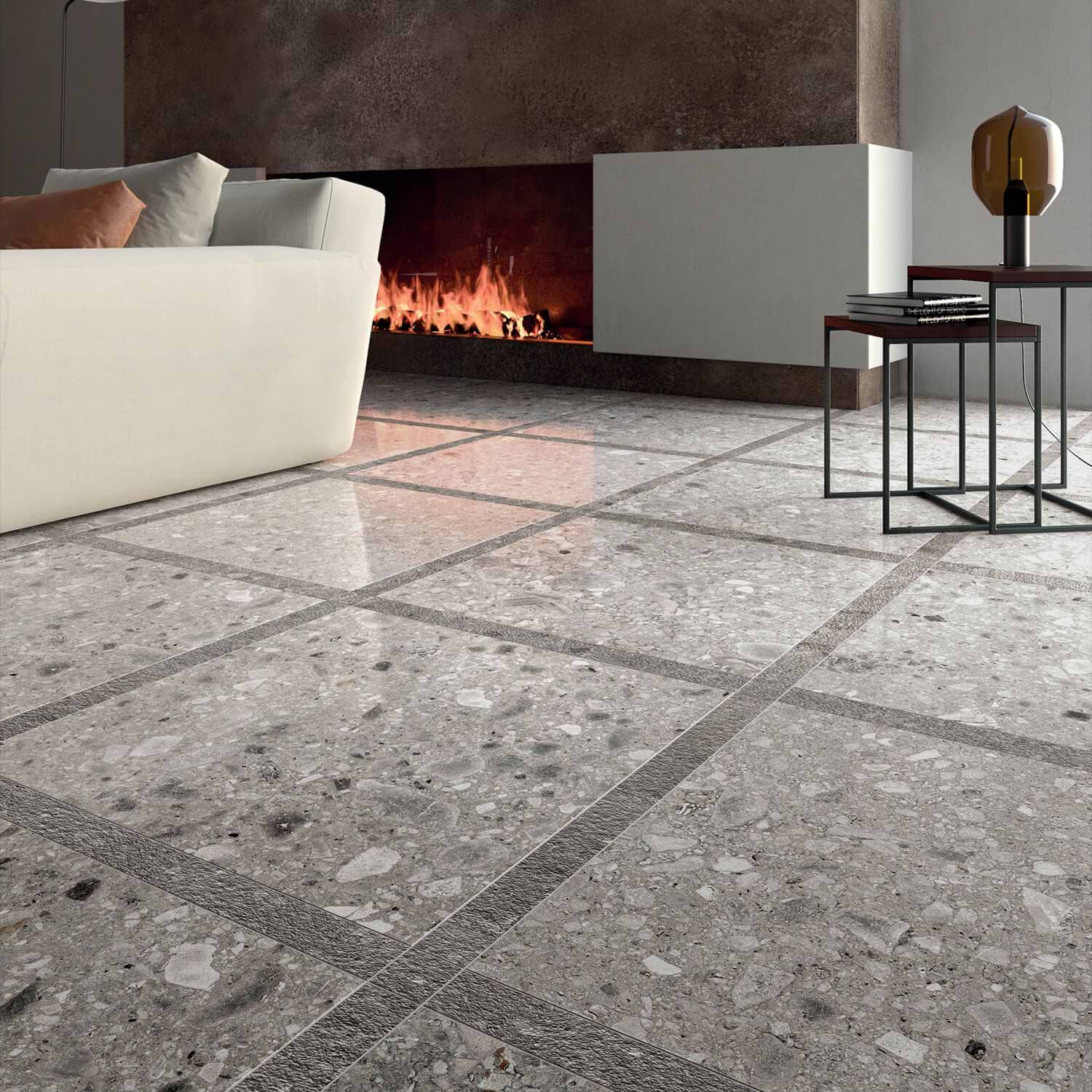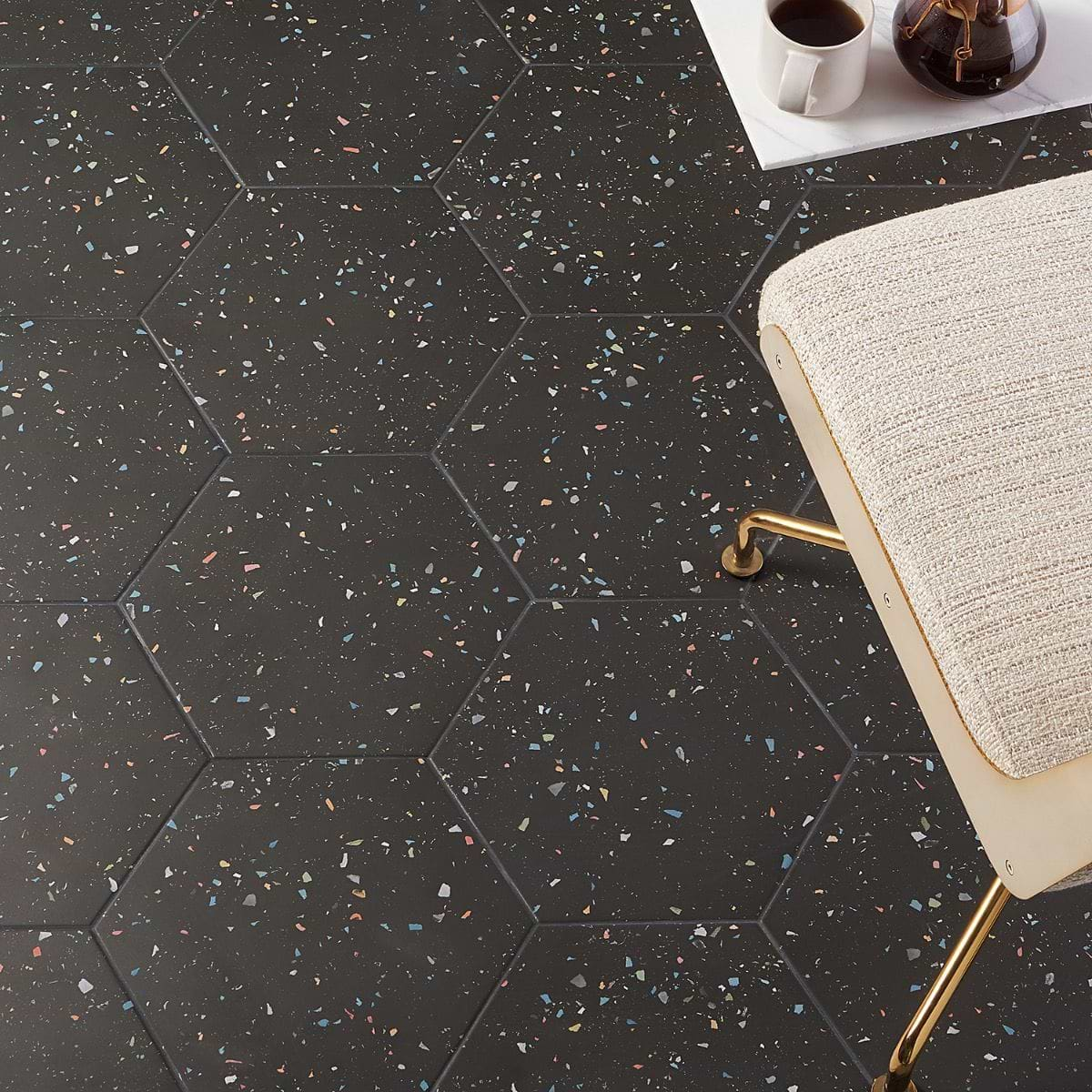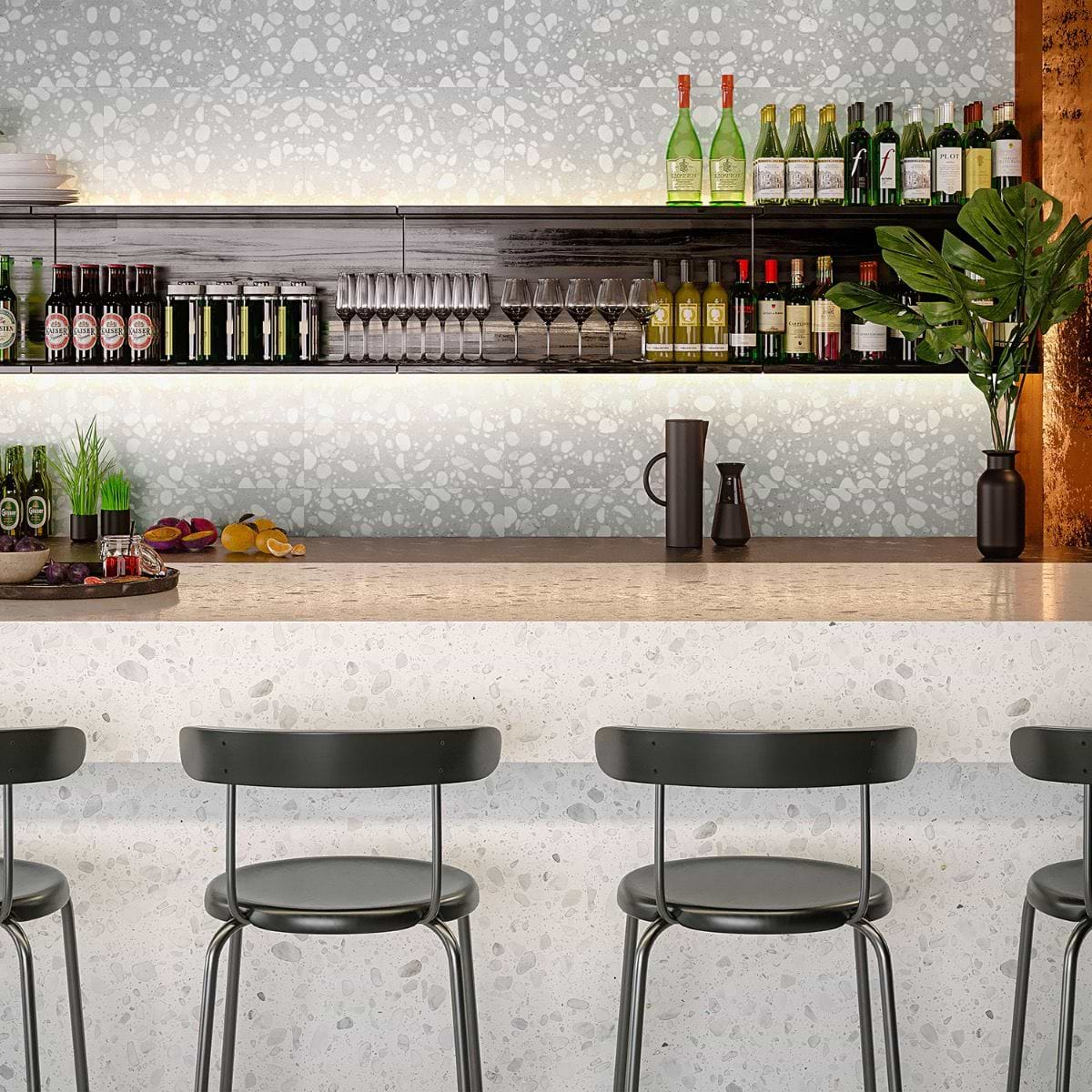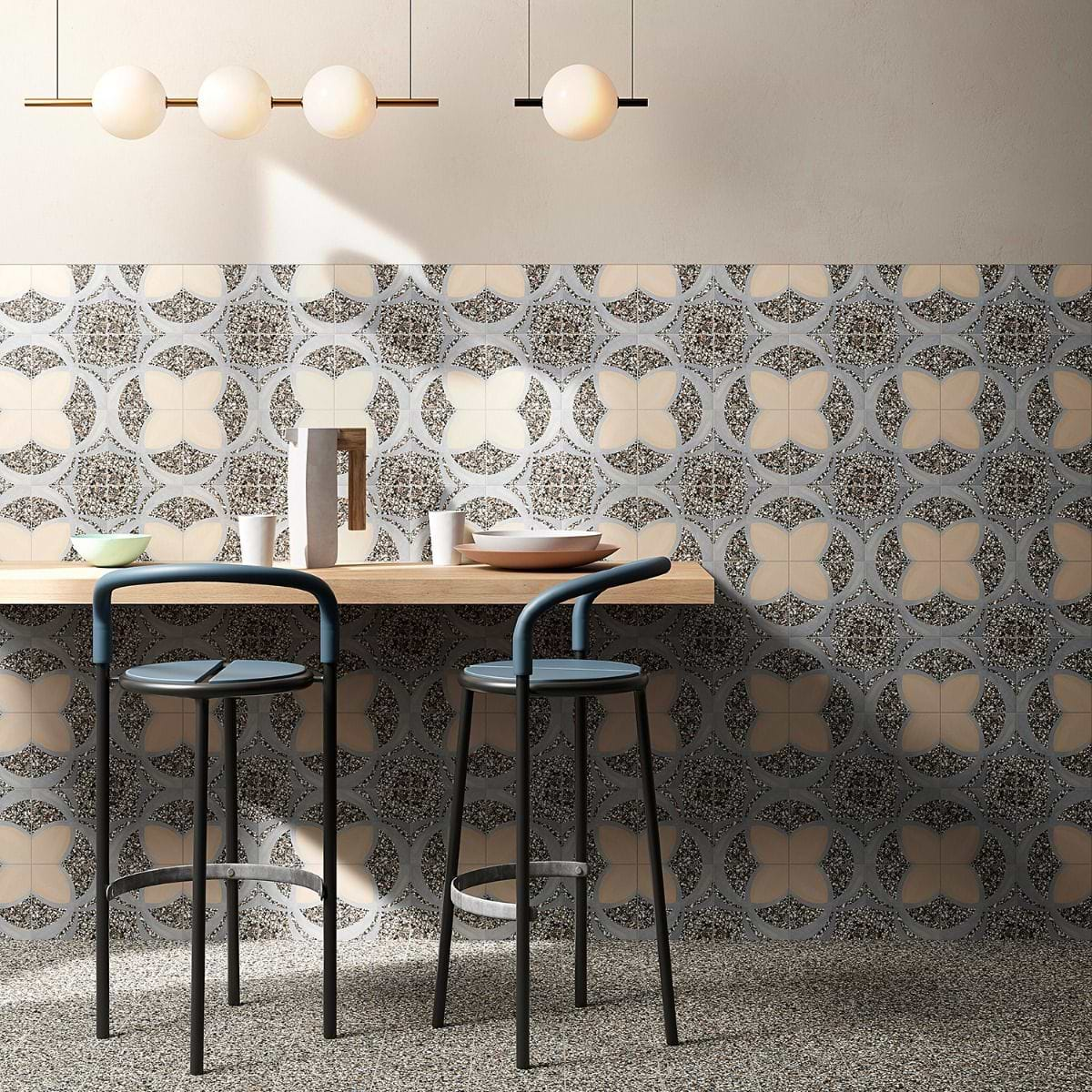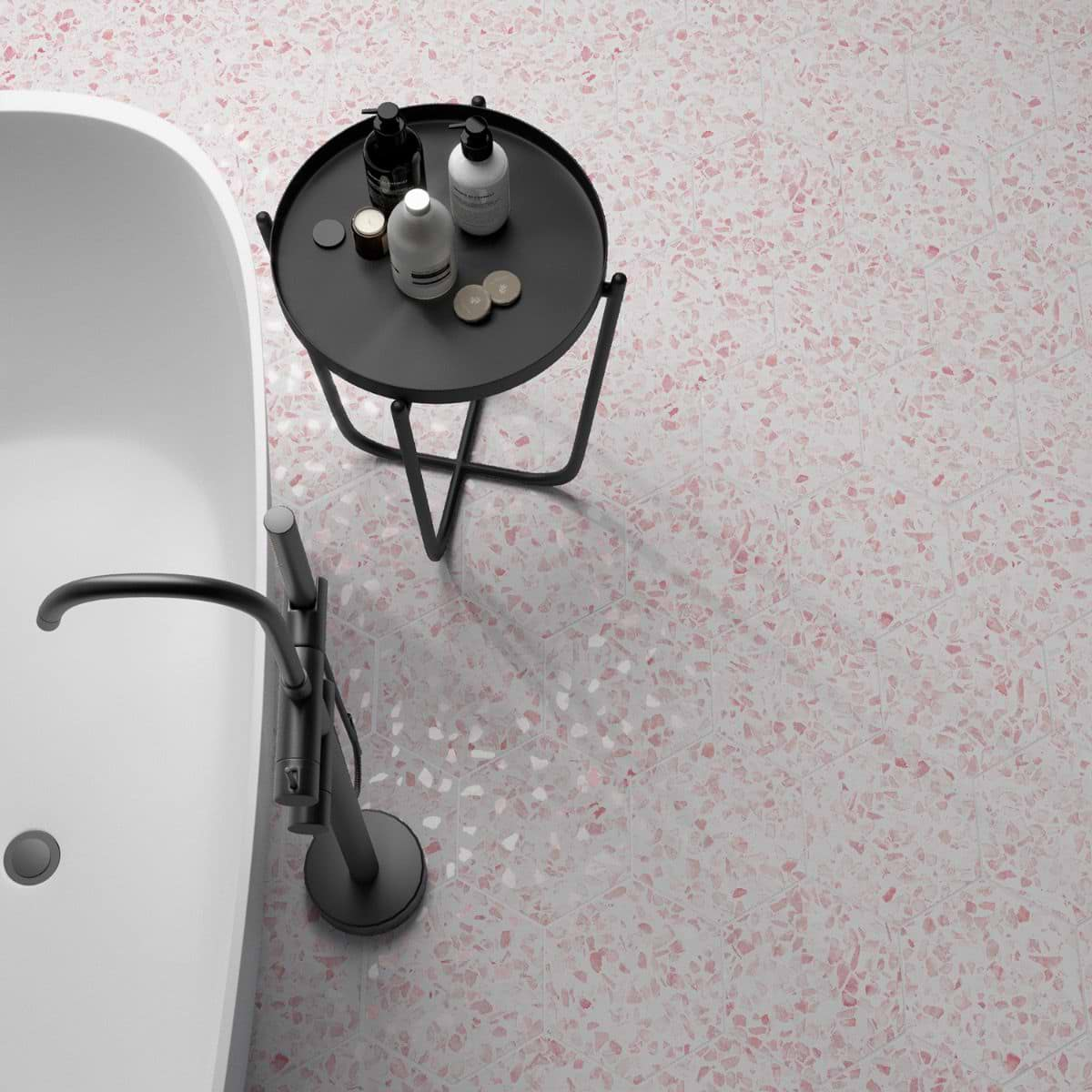Terrazzo is everywhere. The popular decorative surface has broken free from its institutional reputation to realize its place in contemporary design and become the go-to surface for architects and designers around the globe. From authentic poured terrazzo to its use as an inspiration for modern pattern, this timeless, customizable, and instantly recognizable surface has become synonymous with ultimate style, able to blend into any part of the design spectrum. Let’s explore its origins, how it is made, and how you can incorporate this icon of design into your own space.
What is Terrazzo?
Terrazzo is a decorative finish commonly used on floors, walls, stairs, countertops, and other surfaces consisting of durable material chips that is mixed into a binder, like cement or epoxy resin. This mixture is then poured in place or into precast shapes and ground down to reveal the beauty and pattern of the chosen chip materials. The selection of chip materials, like marble, granite, quartz, shells and even glass, and the color of the binder determine the look and visual texture, allowing for a durable finish that can be completely customized to fit into a design or space.
The Origins of Terrazzo
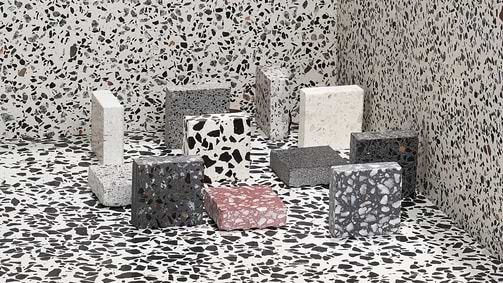
The origins of terrazzo can trace their roots across the globe and as far back as ancient Egypt, but modern-day terrazzo that we use today began its story around 500 years ago in Venice, Italy. Venetian artisans of the time began to take the discarded chips from marble slabs and imbed them into concrete mixtures. They would then grind down the surface for their own terraces and other living spaces – hence the term, “terrazzo” – which is the Italian term for “terrace”. The techniques for grinding down the surface and sealing began to improve over time and terrazzo became an Italian staple of decorative and durable surfacing, as you can see in Italian architectural masterpieces like St. Peter’s Basilica. While many people look up at Michelangelo’s iconic ceiling murals at St. Peter’s, let’s not forget that he also selected terrazzo flooring for when you look down.
Fast forward to the year 1890 when the first ever installation of terrazzo in the United States was laid in New York City at the Vanderbilt residence. This was followed by an influx of Italian immigrants to the United States in the early 1900’s, including the highly-skilled terrazzo artisans, who brought with them technique and demand. By the end of World War I, terrazzo fit perfectly into the new modern and Art Deco design movements and its popularity began to grow along with modern installation techniques and better material technologies. Terrazzo was now the material of choice for many signature buildings of the early 20th century, including the Empire State Building and Radio City Music Hall.
How Is Terrazzo Made?
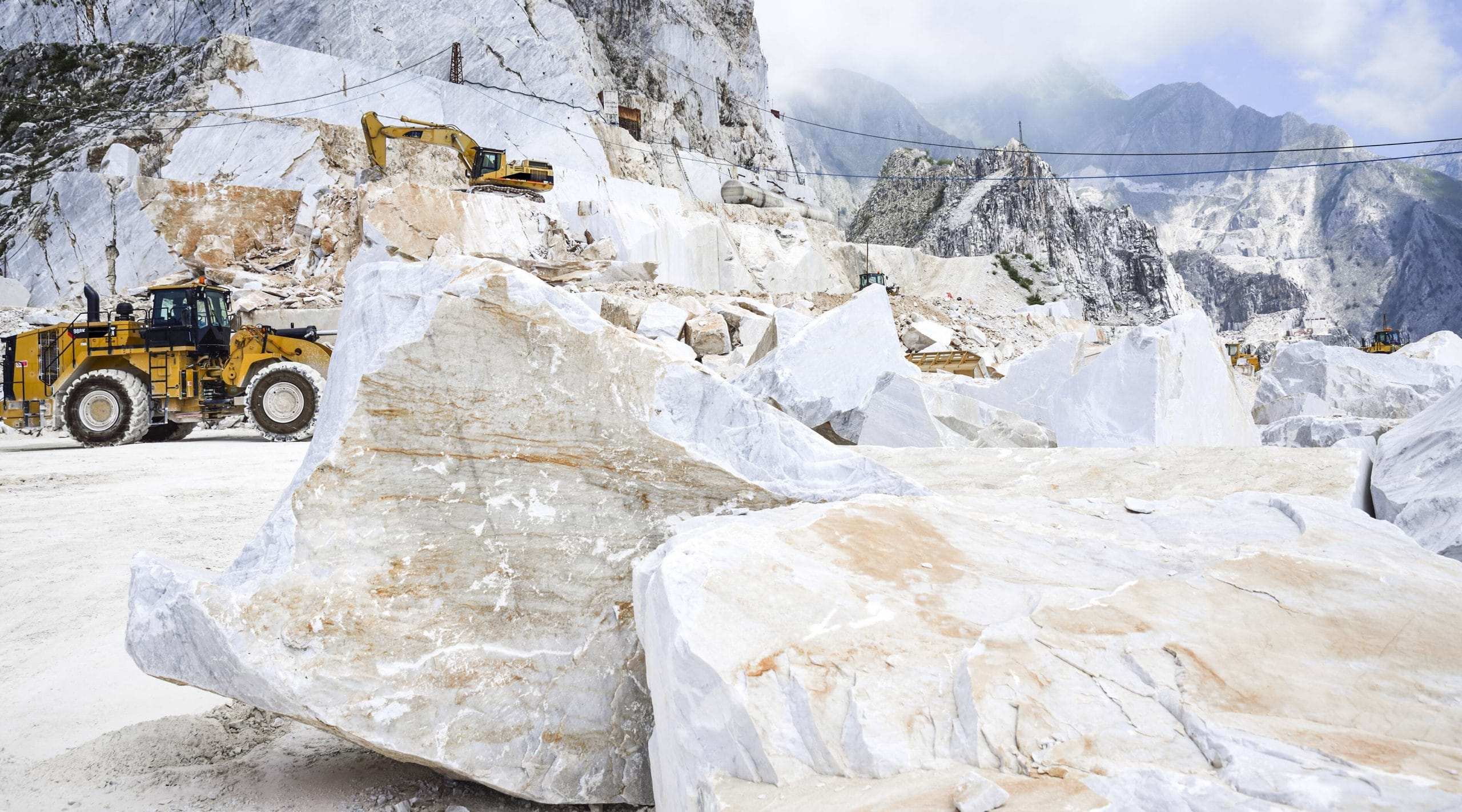
Terrazzo consists of two main ingredients: Pieces of a durable material, or chips, and a binder to hold those chips in place. The chips can be any material that can withstand heavy traffic such as marble, granite, quartz, shells, or even glass. The binder consists of either a cement or resin based, dependent on where the terrazzo will be installed. These two elements are mixed together and then either poured into place or cast into molds for panels or tiles. Once cured, or dried and in a stable condition, the terrazzo mixture is then ground down to reveal the interior of the chips and create a smooth, usable surface for floors, walls, or any other application desired. A sealer or top finish can also be added to enhance the final finish and protect the surface.
The ability to customize the binder, or field color, along with chip type, size, and density makes terrazzo an incredibly versatile and design-driven finish. Thanks to advances in chemistry and modern manufacturing techniques, today’s terrazzo creations can reflect contemporary color and style choices and are typically produced, as mentioned above, using one of the two following techniques:
Pour-In-Place Terrazzo
As the name suggests, this method of installing terrazzo consists of pouring the chip/binder mix into place and uses metal strips to divide different the different colors and provide design elements. A popular choice for large areas where both high design and high foot traffic must coexist, poured-in-place terrazzo does come with a high price tag thanks to the involved installation and required skill of the installer.
Precast Terrazzo
Not every project has the budget or the ability to have an entire crew of artisans create a customized poured terrazzo installation, and that is where precast terrazzo become a great option. Precast starts life as larger terrazzo slabs that are cured, cut into the desired shape, and ground down to a desired finish. These shapes can take the form of large slabs for something like wall installations or countertops, or they can be cut into easily manageable terrazzo tiles to be used in a typical tile installation system.
How to Design with Terrazzo
While terrazzo has its roots classic Italian design, it has sprung from the floors and walls of Venetian palaces to be everywhere in modern décor. Whether you choose an authentic terrazzo tile, a poured-in-place installation, or you want a fun color or shape that pushes a terrazzo look to new heights, let’s explore all the design possibilities with this exciting modern classic.
Terrazzo Flooring
Flooring is probably the first thing that people think of when it comes to terrazzo. Most of us have grown up seeing this popular floor choice in schools, civic centers, court houses, and office buildings. It is still a popular choice today, but how do you get a terrazzo floor in your own space? Terrazzo floor tiles are a great way to incorporate this classic design choice anywhere you walk. Check out these great terrazzo flooring looks.
Terrazzo in Kitchens
You don’t have to have an historic home to want to use terrazzo as a driving force in your kitchen design. What was once thought of as a retro design symbol has now become a usable part of a contemporary home palette. Using terrazzo on a backsplash is now easier than ever thanks to different shapes and colors that can coordinate with existing countertops and cabinets or be the inspiration for an entirely new design. Look at these fun and colorful terrazzo tiles for your kitchen.
Terrazzo in Bathrooms
The bathroom colors and styles popular in the early part of the 20th century have now made a comeback and terrazzo bathroom tile fits in with the soft pastels and jewel-toned tiles that were the height of fashion during terrazzo’s first surge in modern popularity. From the floor, to showers, countertops, and more, explore these options that are sure to make your bathroom look like the latest layout of a design magazine.
Terrazzo Outdoors
Why not take the beauty of terrazzo to the great outdoors? Cement-based binders for terrazzo tile are an excellent choice for outdoor areas, but you can also choose a terrazzo look porcelain tile if you don’t want to apply a finish or sealant. Just make sure that you use a porcelain tile that is rated for outdoor use, and not a ceramic terrazzo tile. Take a look at these outdoor terrazzo looks that bring a modern element of design to your exterior spaces.


